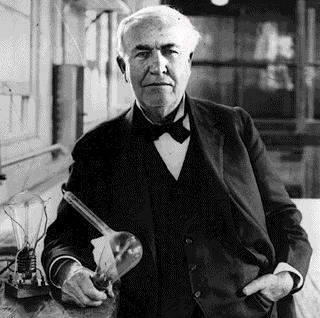 I love quirky, old things (and as I become one myself, my affection for them only increases). A case in point is an old article I came across in the February 1911 issue of Cosmopolitan Magazine, in which Allan Benson asked Thomas Edison to cast his mind forward a hundred years — in other words, to our “now” — and predict what the future held for humanity.
I love quirky, old things (and as I become one myself, my affection for them only increases). A case in point is an old article I came across in the February 1911 issue of Cosmopolitan Magazine, in which Allan Benson asked Thomas Edison to cast his mind forward a hundred years — in other words, to our “now” — and predict what the future held for humanity.
As the originator of over a thousand patented inventions (including the phonograph), Edison was no intellectual slouch. Still, some of his predictions were not quite on target. He prognosticated, for example, that human flight would soon be achieved because humans were on the verge of discovering how to travel on “sound waves” like bees: “Suppose you had four million trained bumblebees attached to wire wickerwork on which was seated a man. Can’t you understand that if the bumblebees were signaled to fly, they would lift the man? I believe that mechanical bumblebees could be so attached to a flying machine.” Edison’s economic predictions were equally off the mark: “There will be no poverty a hundred years from now….When men used nothing but their hands, poverty was most intense. Now that men have begun to use their brains, poverty is decreasing.” The new machines of mass production, Edison claimed, were the key to everyone acquiring whatever material possessions he or she desired: “The world will soon be flooded with the cheap products of machinery,” he told Cosmopolitan, adding that “cheap” did not mean “poor quality” but simply inexpensive.
 Notwithstanding his egregious misses, many of Edison’s futuristic speculations were on the money. His assessment of the Jacquard Loom, which uses punch cards to create patterns, suggest that he was anticipating the invention of the computer: “Look at the Jacquard Loom. What a wonderful principle it embodies…. I expect to see the Jacquard card principle applied to many kinds of machinery. So far as I can see, there is almost no limit to the extent to which it may be applied.” He even seems to hint at the eventual emergence of some sort of nano-technology machine, with raw materials being fed into one end and finished products coming out the other.
Notwithstanding his egregious misses, many of Edison’s futuristic speculations were on the money. His assessment of the Jacquard Loom, which uses punch cards to create patterns, suggest that he was anticipating the invention of the computer: “Look at the Jacquard Loom. What a wonderful principle it embodies…. I expect to see the Jacquard card principle applied to many kinds of machinery. So far as I can see, there is almost no limit to the extent to which it may be applied.” He even seems to hint at the eventual emergence of some sort of nano-technology machine, with raw materials being fed into one end and finished products coming out the other.
To my mind, though, the most intriguing prediction that Edison shared in the 1911 Cosmopolitan article pertains to the future of publishing. While he doesn’t actually forecast e-books and e-book readers, he does recognize that being able to squeeze an enormous amount of data into a handheld device is something that readers might desire. His means of achieving this is to create books out of micro-thin sheets of metal:
“Nickel will absorb printer’s ink. A sheet of nickel one twenty-thousandth of an inch thick is cheaper, tougher, and more flexible than an ordinary sheet of book-paper. A nickel book, two inches thick, would contain 40,000 pages. Such a book would weigh only a pound. I can make a pound of nickel for a dollar and a quarter.”
My Sony ebook Reader, if I recall correctly, holds about 40,000 pages. And it weighs a bit less than a pound.
______________________________________
The Centre for Teaching Excellence welcomes contributions to its blog. If you are a faculty member, staff member, or student at the University of Waterloo (or beyond!) and would like contribute a posting about some aspect of teaching or learning, please contact Mark Morton or Trevor Holmes.